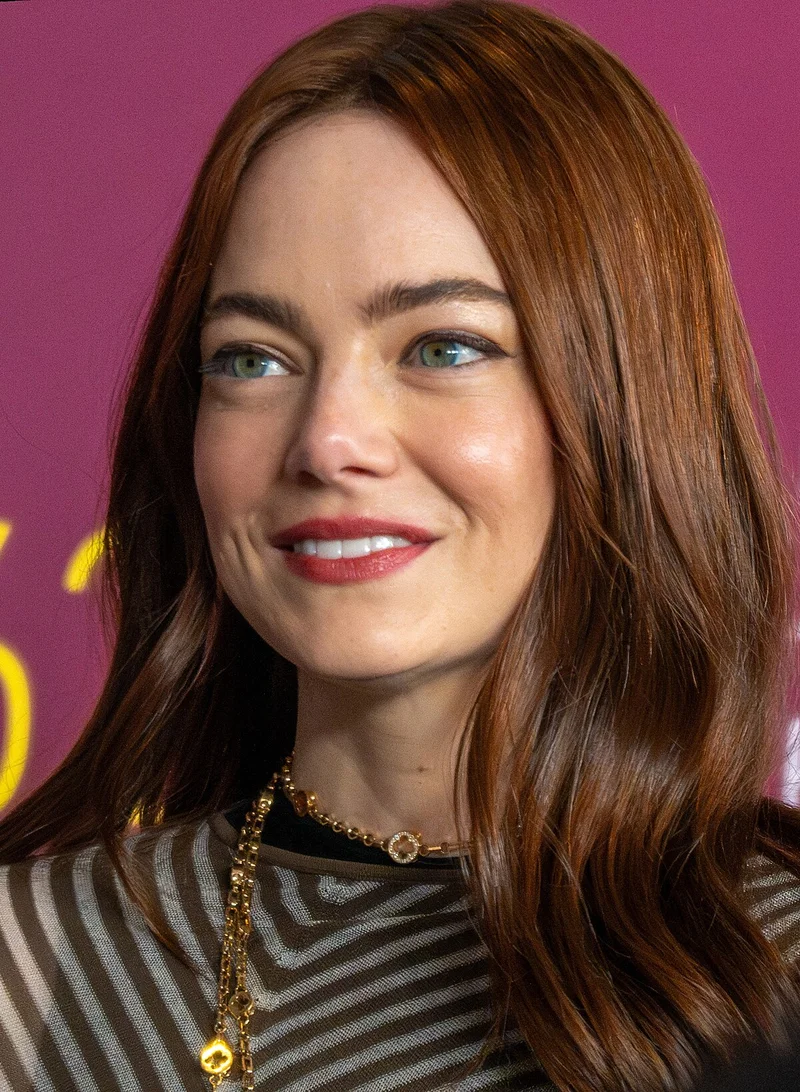That ‘Unrecognisable’ Emma Stone Photo Isn’t About Her Face—It’s About Our Future.
You’ve probably seen the picture by now. It flickered across our collective digital consciousness a few days ago, a ghost in the global machine. Emma Stone, the brilliant Oscar-winning actress from Poor Things and La La Land, is at a Louis Vuitton show. She’s photographed next to Lisa from Blackpink, and in one particular shot, something seems… different.
The internet, of course, did what it does. It fractured. “Is that really Emma!?” one user asked. Another declared, “I would’ve guessed ten different people before guessing that this was Emma Stone.” The speculation cascaded immediately, as it always does, towards the most personal conclusion: cosmetic work. The most striking comment I saw was this one: “Is Emma Stone about to be on a witness protection program??? Her face is completely different!”
And as I watched this digital storm unfold, I didn't see celebrity gossip. I didn't see a debate about an actress's appearance or Emma Stone plastic surgery theories. When I first saw the demo—the raw data of this public reaction—I honestly just sat back in my chair, speechless for a moment. Because I saw something else entirely. I saw the first, faint, mainstream tremor of an earthquake that is about to shake the very foundations of our reality.
This isn't about one woman’s face. This is about all of us, staring into the abyss of a world where we can no longer trust what we see.
The Uncanny Valley of Identity
For decades, we’ve operated on a fundamental social contract: a photograph is a record of a real moment in time. It might be filtered, cropped, or taken from a flattering angle, but the person in it is the person who was there. The Emma Stone of Easy A or the one who shared incredible chemistry with Andrew Garfield in The Amazing Spider-Man—we have a fixed visual library of her in our minds. That contract is now broken. Utterly and irrevocably.
What we’re experiencing is a mass, cultural vertigo. The public’s confusion isn’t really about whether the star of the upcoming movie Bugonia has changed; it’s a subconscious reaction to the fact that any image can now be changed, seamlessly and perfectly. We are living in the dawn of the synthetic age.

This feels like a paradigm shift on the scale of the printing press. Before Gutenberg, truth was fluid, passed down through oral tradition and painstakingly copied manuscripts, each with its own human errors. The printing press created a standardized, mass-produced truth. A book in London was the same as a book in Rome. Now, we are entering the great de-standardization. We are moving from a world of shared reality to a world of infinite, personalized, and potentially fabricated realities. The technology enabling this is evolving at a speed that is just staggering—it means the gap between a real photo and a synthetic one is closing faster than we can even build the intellectual tools to comprehend the difference.
The engine driving this is a beautiful, terrifying concept called a Generative Adversarial Network, or GAN—in simpler terms, it’s two AIs locked in a creative battle. One AI, the “generator,” creates fake images, and the other, the “discriminator,” tries to spot the fakes. They go back and forth millions of times, getting exponentially better until the generator can create images of people, places, and things that are utterly indistinguishable from reality.
That’s the technological background. But the human impact? That’s the story here. The fan who joked about the “witness protection program” was more profound than they knew. They weren’t just commenting on Emma Stone’s face; they were articulating a deep-seated anxiety that identity itself is becoming something that can be shed, altered, or erased at the click of a button.
So, what does this mean for you, for us? It means we have to evolve. Our brains, which are wired to believe our eyes, are now hopelessly out of date. This is a moment that calls not for fear, but for an upgrade. An upgrade in our critical thinking. An upgrade in our digital literacy. We have a responsibility, now more than ever, to ask questions. To seek context. To treat every image not as a statement of fact, but as a proposition.
I saw a comment on a tech forum that captured this perfectly. Someone wrote, "Maybe the point isn't to fear AI fakes. Maybe the point is that this will force us to value authentic, in-person human connection more than ever before." This is it. This is the optimistic path forward. This isn't the death of truth; it's the birth of a new imperative for verification and genuine connection.
Is it possible that the photo is just an odd angle? A trick of the light? Of course. It’s almost certainly the simplest explanation. But the reaction is the data point that matters. It’s a signal from the collective consciousness that we feel the ground shifting beneath our feet. We sense that the visual world we once knew, the one where we could easily recognize the star of Cruella or remember her iconic Emma Stone hair, is dissolving into something far stranger and more fluid.
What kind of world do we want to build on the other side of this earthquake? A world of cynical distrust, where we believe nothing? Or a world of profound intentionality, where we learn to see with our minds as much as our eyes?
This isn't an ending. It's an awakening. We are being handed tools of creation and manipulation that were once the exclusive domain of gods and myths. The panic and confusion are just the growing pains of a species leveling up. The challenge isn’t to fight this new reality, but to become better humans in response to it—more critical, more thoughtful, and more deeply connected to the tangible, authentic world that exists beyond the screen. The future isn't about trusting pixels; it's about trusting people.
Reference article source: